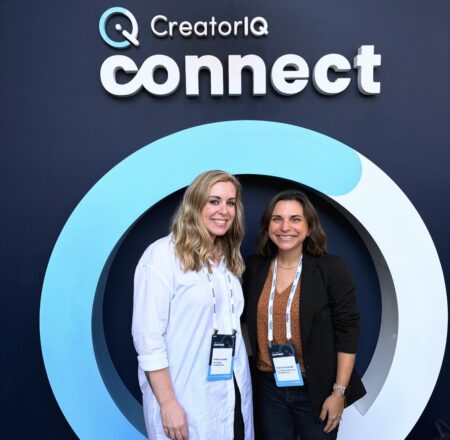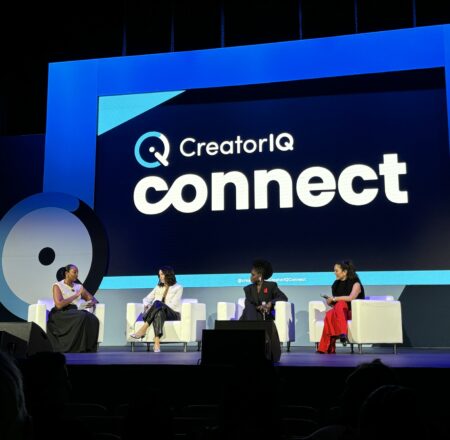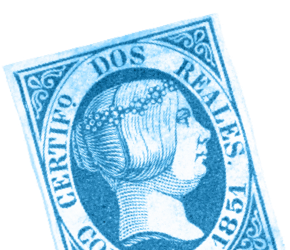
Hello, LA! 🌴☀️ Our team was on the ground for CreatorIQ Connect, a one-day conference on all things creator and influencer marketing with some of the top brands. We were fully immersed in panel discussions, workshops and networking with other like-minded brands and agencies who are putting social first, with creators at the heart of their marketing strategies. Let’s dive into our takeaways from a top influencer marketing conference!
A mix-tier team: The lifeblood of brand campaigns
Sure, influencers with a million followers may seem like a shiny fit for your brand, but there are many considerations when working with top-tier and mega influencers. A big one is budget; these creators typically have very high fees, but another one is that you may not want to put all your eggs into one basket, so to speak. We love these high-profile influencers who create buzz, notoriety and incredible reach, and they should be a part of campaigns when appropriate. But a common trend we saw at the conference and we recommend to our own clients is to utilize a mix-tier team of creators in your campaigns – with micro influencers as the sweet spot. Each tier of influencer (nano, micro, mid-tier, top-tier, mega/celeb if you can afford it) brings its own unique value. Nano and micro influencers, for example, usually create a lot of engagement and conversation with their hyper-connected audiences. Some also bring a specific niche, too so if your brand is very specific to one industry or topic, these folks can fit nicely in the niche. And keep in mind, today’s micros could be tomorrow’s mega influencers, so you can get in on the ground floor with them.
Once you get into mid- and top-tier territory, higher reach and impressions come into play, as do higher link clicks and more intent to purchase (also great for affiliate programs). Knowing what your KPIs are ahead of securing an influencer team is vital, so that way you can achieve your goals and benchmark for future campaigns.
Don’t know how to set goals? We can help!
Getting back to long-form content
A recurring theme that came up several times was getting back to social at its core, which is long-form content. In the early days, blogs were the home base of influencer content, and bloggers opened the lid on sharing their lives online. When Instagram arrived on the scene, content quickly got shorter and shorter, and then other short-form content emerged (think Vine (RIP!), then TikTok and later, YouTube Shorts). Attention spans got shorter, but with ever-changing algorithms, creators both kept up with the times but wanted to get back to basics, and have more ownership of their content, so today, they are reintroducing their blogs, and launching newsletters on platforms like Substack.
Content is king, and content is needed
Many of the brands who spoke on the panels at CreatorIQ Connect talked about just how difficult it is to keep up with the speed of content. They need to churn out engaging, brand-right content multiple times per week in multiple forms (Instagram Reels, Instagram Stories, TikTok, etc.). Marianna Hewitt, founder of Summer Fridays, talked about how many people do not even touch, feel, and try beauty products before they order them, so that is why creator content is crucial ahead of their product launches so they can really show their audiences how the product works and how they are using it. And oftentimes, creator content performs over brand content. With the constant need to create content, it’s not feasible for a lot of brands to have professional photoshoots or hire designers to keep up with the pace, so creator and user generated content is so needed to not only show third-party opinions and credibility for your brand, but to keep your feeds up to date with new, fresh, compelling content.
Safety and trust first
Not all brands and organizations using influencer marketing are beauty brands. Many highly-regulated companies like pharmaceutical brands or financial institutions are doing more with social and influencers every day, and while they can’t move as quickly, it’s pivotal they move safely, and that’s why it’s essential to have safety parameters in place to comply with legal, compliance and other regulated entities like the FTC, SEC, FDA, etc.
Keeping safety in place was another common theme of the conference. At The Motherhood, we pride ourselves on hand-vetting for each influencer we recommend for clients, so we can ensure they will stick with messaging and requirements. This includes an in-depth search of their social – both present and past, Google searches, criminal background checks, signing not only agreements, but compliance statements and more. We also use CreatorIQ’s tools to supplement our vetting with their technology, including checking for audience integrity, content flags in their discovery tool, and making sure creators are safe by opting into CreatorIQ’s authentication tool to give us the proper – and safe – access so their content is protected. In a world of AI and machine learning, these steps are essential in creating an influencer team that you can trust (and a team to trust you).
Working with influencers has come a long way, and it can be a multi-year process to both get comfortable with them, and for them to get comfortable with you! Testing, learning, and creating long-term relationships goes far, and many of the creators who spoke said they truly value brands who trust them to lean into their content styles and if a brand is good to them, they will go the extra mile.
Any savvy brand in 2024 is tapping heavily into influencers and not only being creator-led, social-first but also content-first to keep up with content-first algorithms. Working collaboratively and openly, incorporating mix-tier teams, a variety of brand and user content, and being safe but nimble were the main takeaways from a top influencer marketing conference.
Thanks for having us, CreatorIQ!



Take a Comment. Leave a Comment.
Read More ...
Influencer Marketing Resources: April 2025
Influencer Marketing Resources: March 2025
Social Media Metrics Glossary: Your Guide to Effectively Measure Your Next Influencer Campaign